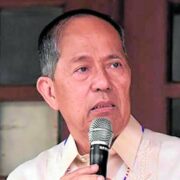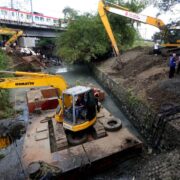A matter of national survival

Education has always been a top priority among Filipinos, as evidenced by the framed diplomas of a family’s college graduates, the shingle of the progeny’s professional title tacked outside the home, and the giant tarpaulins congratulating new degree holders.
Despite such proud aspirations, Filipinos still languish at the bottom of global academic assessments, placing 77th out of 81 countries in the 2022 Programme for International Student Assessment.
Another blot on the country’s education landscape is found in the latest findings of the 2024 Functional Literacy, Education, and Mass Media Survey (FLEMMS) by the Philippine Statistics Authority (PSA), which showed that some 18.9 million Filipinos who completed high school between 2019 and 2024 may be considered “functional illiterates,” as they still have problems with reading comprehension despite years of schooling.
A total of 572,910 individuals from 177,656 households took part in the PSA study, which the agency has been conducting every five years. The FLEMMS results were discussed last week in a Senate hearing led by Sen. Sherwin Gatchalian, the chair of the Senate basic education committee.
As of last year, the senator noted that about 24.82 million Filipinos aged 10 to 64 were considered functionally illiterate, or individuals who could read, write, and compute but could not understand what they read.
‘Intergenerational disadvantage’
This means they have “very basic reading and writing skills but [are] unable to apply them effectively in everyday situations and contexts,” explained Inquirer columnist Lynn Pinugu, the cofounder and executive director of Mano Amiga, a nongovernmental organization promoting education in poor communities.
Lacking functional literacy means they are unable “to use reading, writing, and numeracy skills … to understand essential information, such as correctly interpreting dosage instructions on medicine bottles, comprehending utility bills, calculating discounts, or accurately filling out application forms. It’s about reading maps or understanding basic graphs,” noted Dr. Karol Mark Yee, the executive director of the Second Congressional Commission on Education.
Lack of functional literacy is a factor behind the high poverty incidence in several provinces, Gatchalian said of the country’s poorest provinces, like Tawi-Tawi and Davao Occidental, that recorded the highest functional illiteracy rate. In contrast, provinces that topped the PSA literacy list, such as Cavite and Bataan, have lower poverty incidence rates, Gatchalian added. Further, eight of the 10 provinces with the poorest literacy rates are found in Mindanao.
Pinugu explained that without higher literacy skills, employment opportunities become limited. “Consequently, they are at greater risk of poverty and social exclusion” and leads to “intergenerational disadvantage,” she added.
21st-century skills
As overwhelming as it may seem, the problem can be addressed with literacy programs initiated by local government units based on the PSA survey, Gatchalian said.
That Education Secretary Sonny Angara himself acknowledged the need for, and his agency’s commitment to functional literacy is as encouraging. As the lead agency to deal with the country’s deteriorating quality of basic education, the Department of Education must immediately launch recovery initiatives and sustain them.
According to Angara, these initiatives include improvements on remedial and literacy programs, curriculum decongestion, revisiting grading and retention policies to combat “mass promotion;” piloting functional literacy programs for out-of-school youth, and revising incentives and targets to put literacy at the heart of its work. “We have also deepened our teaching and assessment methods. Instead of memorization, we are shaping students to be critical thinkers and have 21st-century skills,” Angara said.
One crucial investment
For her part, ACT Teachers’ party list Rep. France Castro called for the immediate passage of House Bill 1783, or the Education as Priority in the National Appropriations Act, which would mandate the allocation of at least 6 percent of the country’s gross domestic product to education to address the shortage of classrooms and teachers and raising the salary of teachers. According to the Philippine Business for Education, our education budget has been just 3.6 percent of GDP since 2022—far short of Unesco’s recommendation of 4 to 6 percent.
Experts have also linked lower literacy rates to poverty, and lack of nutrition for children in particular. The national government should take a serious look at this problem of malnutrition and implement a sustained program, tapping the private sector for much-needed resources.
As Yee noted, the functional literacy crisis which “impacts opportunity and productivity and perpetuates cycles of poverty … is a challenge to our national survival.” Human capital, after all, is one crucial investment whose returns last for generations.

















